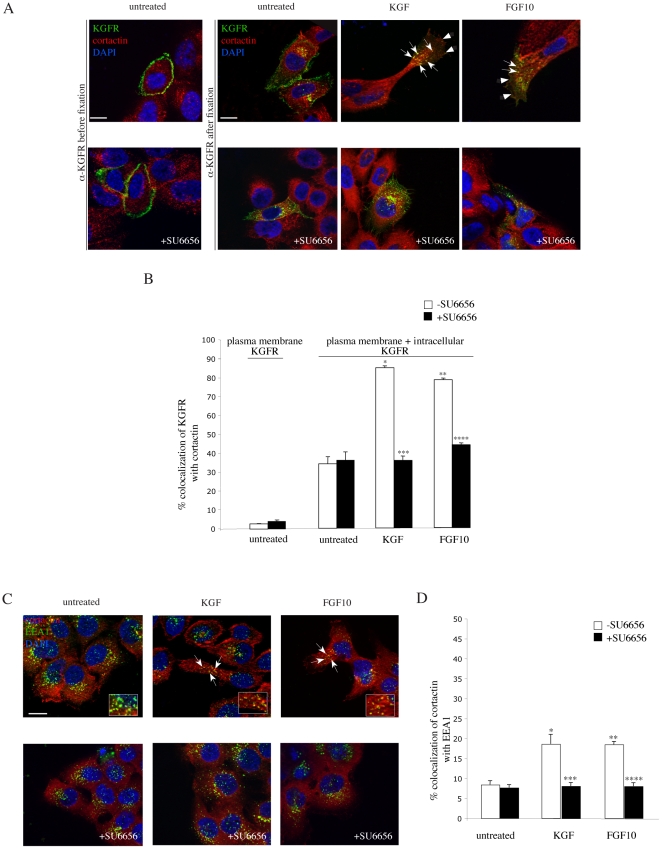Figure 4. Src activity is required for KGFR and cortactin colocalization.
A) HaCaT KGFR cells, treated or not with the growth factors, were incubated at 4°C with the anti-Bek polyclonal antibodies before cell fixation, as above, to selectively stain the plasma membrane KGFR, or with an anti-Bek monoclonal antibody after cell fixation and permeabilization, to visualize simultaneously the intracellular and plasma membrane KGFRs. Double immunofluorescence analysis, using anti-cortactin monoclonal antibody or anti-cortactin polyclonal antibodies, shows that in untreated cells the KGFR signal is localized along the entire surface of the cell plasma membrane, as well as in intracellular dots, and the cells do not show migratory features. The cortactin staining appears mainly localized on small intracellular dots dispersed throughout the cytoplasm, and only partially overlapping with KGFR positive dots. After treatment with either KGF or FGF10, cortactin and KGFR colocalization is significantly increased, evident not only in intracellular endocytic dots (arrows), but also at the level of the plasma membrane, where cortactin is translocated (arrowheads). Upon ligand treatment HaCaT KGFR cells located on the periphery of the colonies show a typical migratory phenotype, with a clearly defined leading edge, where the intracellular yellow dots stained for both cortactin and KGFR appear to be concentrated. Treatment with SU6656 reduces the colocalization between KGFR and cortactin, at a level comparable to that observed in untreated cells, and abolishes the migratory features. Images shown were obtained by 3D reconstruction of a selection of three out of the total number of the serial optical sections as reported in figure 2. Bars: 10 µm. B) Quantitative analysis of the percentage of colocalization of KFGR and cortactin was performed by serial optical sectioning and 3D reconstruction, as reported in Materials and Methods. Results are expressed as mean values +/- SE (standard errors): the percentage of colocalization was calculated analyzing a minimum of 50 cells for each treatment randomly taken from three independent experiments. Student's T test was performed and significance levels have been defined. *p<0,001 vs the corresponding untreated cells; **p<0,001 vs the corresponding untreated cells; ***p<0,001 vs the corresponding cells –SU6656; ****p<0,001 vs the corresponding cells –SU6656. C) Double immunofluorescence analysis, using anti-cortactin polyclonal antibodies and anti-early endosome antigene 1 (EEA1) monoclonal antibody, shows that the colocalization between cortactin and EEA1, already visible in untreated HaCaT cells, is increased upon KGF or FGF10 treatment and appears mostly relocalized in dots at the leading edge of migrating cells (arrows). The treatment with SU6656 significantly reduces the cortactin/EEA1 colocalization, as well as the migratory phenotype, upon either KGF or FGF10 stimulation. Images shown were obtained by 3D reconstruction of a selection of three out of the total number of the serial optical sections as reported in figure 2. Bars: 10 µm. D) Quantitative analysis of the percentage of colocalization of cortactin with EEA1 was performed by serial optical sectioning and 3D reconstruction as above. Results are expressed as mean values +/- SE; the percentage of colocalization was calculated analyzing a minimum of 50 cells for each treatment randomly taken from three independent experiments. Student's T test was performed and significance levels have been defined. *p<0,005 vs the corresponding untreated cells; **p<0,005 vs the corresponding untreated cells; ***p<0,001 vs the corresponding cells –SU6656; ****p<0,005 vs the corresponding cells –SU6656.

